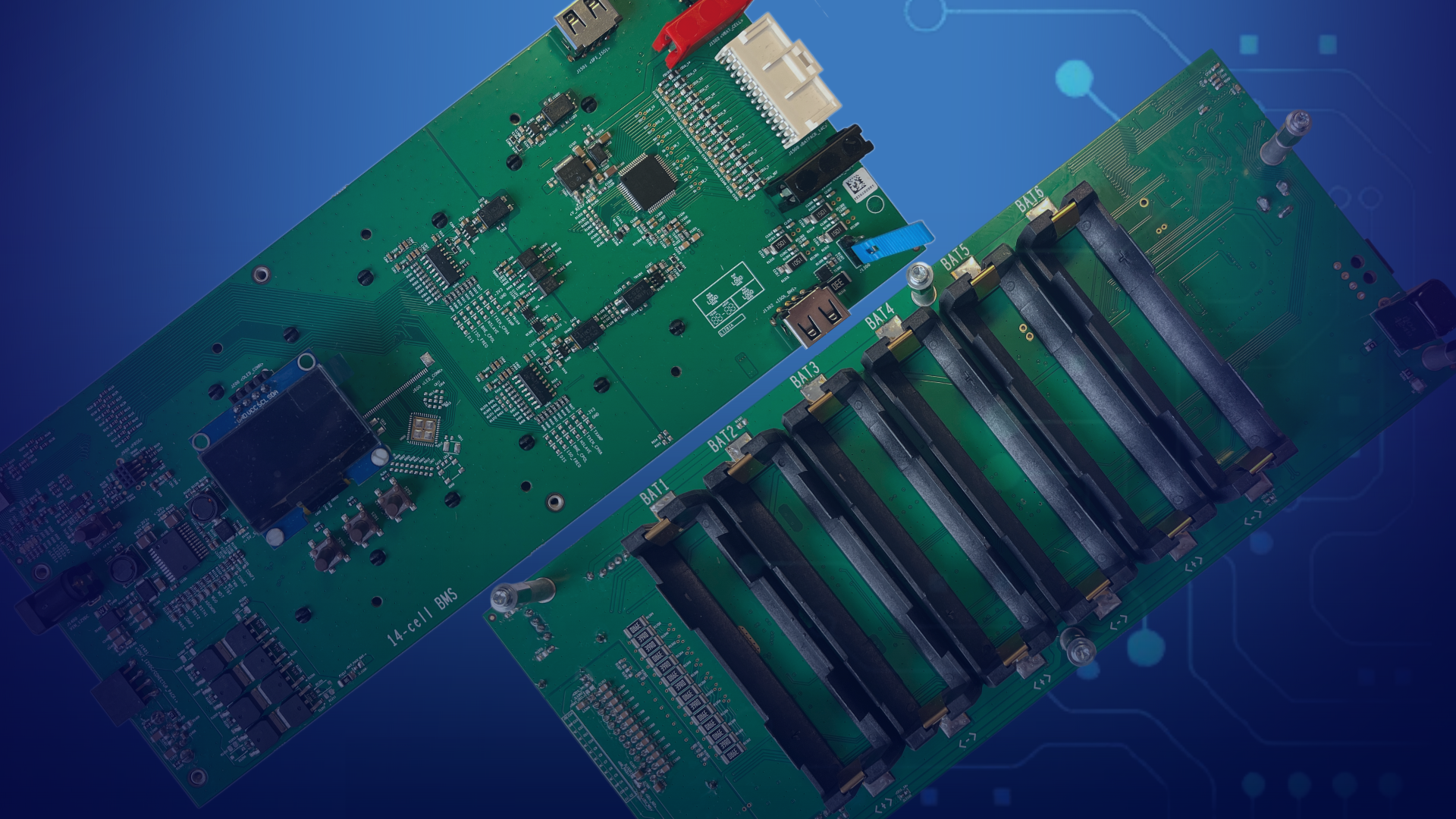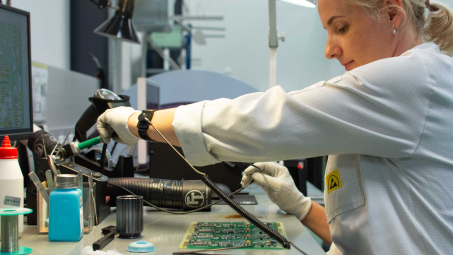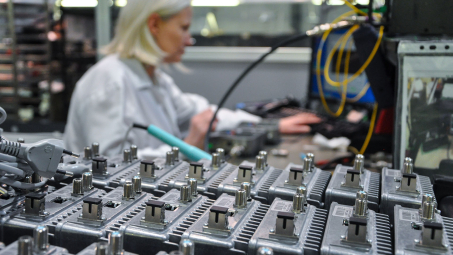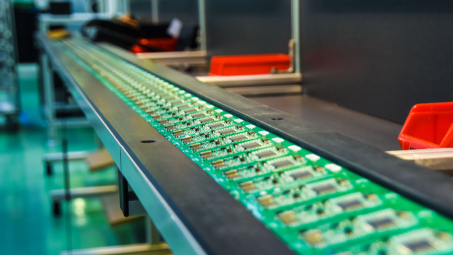How to manage the health of the battery pack - BMS solutions
In an era dominated by technology, where sustainability and efficiency are paramount, battery condition management via a battery management system (BMS) is becoming an extremely important component. Why is this the case? These systems, complex in their functionality, are a lifeline for extending the utility and reliability of battery packs in a wide range of applications. From electric vehicles (EVs) to portable electronics and large-scale energy storage systems, the role of the BMS is extremely important.
Table of contents
- What is battery management system
- The science behind BMS
- The integral role of fuel gauge monitors in BMS
- BMS and the sustainability of lithium-ion cells
- Advanced diagnostics and prognostics in battery management system
- The impact of BMS on renewable energy integration
- Challenges and future directions
- Where else do BMS systems find their application?
- Conclusion
What is battery management system
Delving into the heart of a battery management system, it is first necessary to understand the complex components and functions that make up the BMS. Essentially, the BMS can be described as the brain of the battery, which ensures operational efficiency and safety.
It meticulously monitors parameters such as cell voltage and battery temperature - two critical parameters that determine battery health and performance. For lithium-ion batteries, which are widely used in electric vehicles and portable devices, maintaining optimal cell voltage and temperature is critical to preventing potential hazards and extending battery life.
How does a battery management system?
Imagine going to a concert where each musician plays a vital role in creating a symphony. Similarly, a BMS orchestrates the complex processes within a battery pack, ensuring each cell plays its part perfectly. Like a conductor, it monitors each cell's voltage and temperature, balances the charge across the cells, and protects the battery from overcharging and deep discharging.
It's essentially the guardian angel of the battery, keeping an eye on it to make sure everything runs smoothly and safely, much like how you'd keep an eye on a toddler at a playground. It's all about harmony, balance, and protection, making sure the battery's performance is music to the ears of its users.
Do I need a battery management system?
Do you need a map when you're exploring a new city? Absolutely! Similarly, think of a BMS as your guide in the complex world of batteries. Whether you're driving an electric vehicle, using a smartphone, or storing solar power for a rainy day, a BMS ensures your battery is used efficiently and safely.
It's like having a personal battery butler, catering to the needs of your battery pack, ensuring it lasts longer, performs better, and doesn’t throw any unexpected tantrums. So, yes, if you rely on batteries in any significant way, a BMS isn’t just a good idea; it’s essential.
What is the battery management system method?
It involves a mix of monitoring, controlling, and predicting. First, it keeps a close watch on the vital signs of the battery, like voltage, temperature, and current. Then, it takes control, balancing the cells and managing the power flow to prevent any mishaps. Finally, it predicts the battery's future state, using smart algorithms to forecast potential issues before they occur.
This proactive approach ensures the battery's health and longevity, making the BMS method a blend of science, art, and foresight.
What are the different types of BMS?
Battery Management Systems come in various ways, each suited to different needs.
On one end, we have Passive BMS solutions, the simple yet effective, focusing on basic protection and balancing without too much complexity.
Then, there’s the Active BMS, offering more advanced features such as active cell balancing and enhanced monitoring capabilities.
Advanced BMS systems come with all the bells and whistles, including wireless connectivity, cloud-based analytics, and integration with renewable energy systems. Depending on your taste and requirements, there's a BMS type that perfectly matches your battery's needs.
The science behind BMS
The operational efficacy of a BMS hinges on several key functionalities:
- cell balancing
- state of charge (SoC)
- state of health (SoH) estimation
- temperature monitoring
- protection mechanisms against overcharging and deep discharging
Cell balancing is a technique used to equalize the charge across all cells in a battery pack, crucial for maximizing battery performance and lifespan. SoC and SoH estimations provide insights into the battery's current capacity and overall health, enabling predictive maintenance and efficient use of the battery pack.
The integral role of fuel gauge monitors in BMS
One key component of a battery management system that deserves attention is the charge level indicator monitor. This device plays a key role in providing real-time data on the battery's state of charge (SoC), effectively acting as a "fuel gauge" for electric batteries. What does it mean? It offers an accurate estimate of the battery's remaining life, enabling users and systems to make informed decisions about battery use and management.
The benefits that follow are worth mentioning. Integrating fuel gauge monitors with BMS solutions enhances user experience by preventing sudden battery depletion, thereby ensuring reliability and safety in applications ranging from consumer electronics to electric vehicles and energy storage systems. Advances in fuel gauge technology, including impedance tracking and coulomb counting methods, contribute significantly to the precision and efficiency of the battery management system in managing battery health and optimizing battery performance.
BMS and the sustainability of lithium-ion cells
In the context of environmental sustainability, to which VECTOR BLUE HUB refers, the role of a battery management system in extending the life of lithium-ion cells cannot be overestimated. By meticulously managing charge and discharge cycles, monitoring cell health and preventing conditions that could lead to premature aging, BMS solutions directly contribute to reducing electronic waste.
Lithium-ion batteries are a key component of renewable energy systems and electric vehicles, which are essential to reducing carbon emissions. However, the environmental impact of manufacturing and disposing of these batteries is a growing concern. By extending battery life and increasing efficiency, BMS technology plays an important role in the sustainable use of lithium-ion batteries, ensuring that the transition to renewable energy sources and electric mobility is as green and sustainable as possible.
Advanced diagnostics and prognostics in battery management system
The future of battery management systems lies in the realm of advanced diagnostics and predictive diagnostics. Modern BMS systems are increasingly equipped with advanced algorithms capable of diagnosing potential problems before they lead to failure, as well as predictive tools that predict the future state and performance of the battery.
This predictive capability is critical, especially in critical applications such as electric vehicles and renewable energy storage, where battery failure can have serious consequences. Using data analytics, machine learning and artificial intelligence, the BMS can provide detailed insight into battery health, predict future problems and recommend preventive measures. This not only improves safety and reliability, but also optimizes maintenance schedules and reduces total cost of ownership
The impact of BMS on renewable energy integration
As the world moves toward renewable energy, the integration of battery management systems (BMS) with renewable energy sources is becoming increasingly important. BMS technology is at the forefront of enabling the efficient storage and use of renewable energy, such as solar and wind power, in both grid-scale energy storage systems and off-grid applications.
By optimizing battery performance and life, the battery management system ensures that renewable energy can be reliably stored and efficiently used, taking into account the intermittent nature of renewable energy. This not only enhances the stability and reliability of power grids, but also plays a key role in enabling remote and underserved communities to access clean, sustainable energy.
The Role of BMS in Energy Storage Systems
BMS solutions play a pivotal role in energy storage systems (ESS), where they ensure the efficient and safe storage of renewable energy. In large-scale ESS, a BMS monitors and manages hundreds or even thousands of lithium-ion cells, optimizing their performance and safeguarding against potential risks. This is crucial for the stability of power grids and the integration of renewable energy sources, making BMS an indispensable tool in the transition towards a more sustainable energy future.
As such, the BMS is enabling a global shift toward a more sustainable and resilient energy infrastructure, a significant step in combating climate change and promoting energy independence. And, as we know, these are important topics to address and consciously address these environmental challenges.
Challenges and future directions
Despite the significant advancements in BMS technology, challenges remain, including the need for more sophisticated algorithms to accurately predict battery life and performance under varying conditions. The integration of artificial intelligence and machine learning into BMS promises to address these challenges, offering smarter, more adaptive systems capable of optimizing battery performance in real-time.
Where else do BMS systems find their application?
BMS in aerospace applications: the role of high-altitude pseudo-satellites (HAPS)
In the cutting-edge sector of aerospace, particularly within the realm of High-Altitude Pseudo-Satellites (HAPS), the intricacies of battery management systems (BMS) take on a pivotal role. These solar-powered aircraft, designed to operate above conventional air traffic levels for extended periods, rely heavily on sophisticated BMS technology to balance and manage their onboard battery packs. An exemplary case is the Zephyr S, developed by Airbus, which holds the record for the longest unmanned flight, with a duration of over 25 days.
The BMS in such aircraft is crucial, as it not only has to ensure the optimal charging and discharging of the battery pack during day-night cycles but also has to manage extreme variations in temperature and atmospheric pressure. This includes the precise monitoring of cell voltage and temperature across the battery pack, ensuring that each cell operates within its safe operating area (SOA), and implementing advanced algorithms for state-of-charge (SoC) and state-of-health (SoH) estimations under fluctuating environmental conditions. This level of precision and reliability in battery management underscores the critical role of BMS in pushing the boundaries of aerospace technology, enabling these high-altitude missions to collect data and provide telecommunications services over vast areas without the need for satellite launches.
Revolutionary BMS for Underwater Exploration Vehicles
Diving into the depths of the ocean, battery management systems (BMS) are instrumental in powering autonomous underwater vehicles (AUVs) and remotely operated vehicles (ROVs) for marine research and exploration. One notable example is the use of BMS in the battery packs of the AUV Sentry, operated by the Woods Hole Oceanographic Institution. Sentry is designed for deep-sea exploration, capable of diving up to 6,000 meters below the surface to map the ocean floor, study underwater volcanoes, and investigate marine ecosystems with unparalleled precision.
The BMS in such vehicles is tailored to withstand the high-pressure, low-temperature environments of deep-sea expeditions, ensuring that the lithium-ion battery packs provide reliable and consistent power. This includes sophisticated thermal management to mitigate the cold temperatures of deep waters and robust protection against the high pressures encountered at depth.
Through advanced diagnostics and prognostics, the BMS monitors the battery's health and performance, enabling these underwater explorers to undertake lengthy missions that contribute valuable data to our understanding of the ocean's mysteries.
Conclusion
The health and efficiency of battery packs are crucial in today's technology-driven society, and Battery Management Systems stand at the forefront of ensuring these objectives are met. From enhancing the performance and safety of electric vehicles to optimizing large-scale energy storage systems, BMS solutions play a vital role in the modern energy landscape.
As technology evolves, the importance of advanced BMS solutions will only grow, highlighting the need for continuous innovation and development in this field. Understanding and harnessing the potential of BMS is key to unlocking the full capabilities of battery technology, paving the way for a more sustainable and efficient future.











Wojciech Jesionkowski
Wojciech leads the development team and strives to bring customers’ ideas to life. During his 14 years at VECTOR as an engineer, he has gained strong problem-solving skills and analytical thinking in product development. Privately, he's a father who loves to spend time with his family on shared outdoor activities and travels.